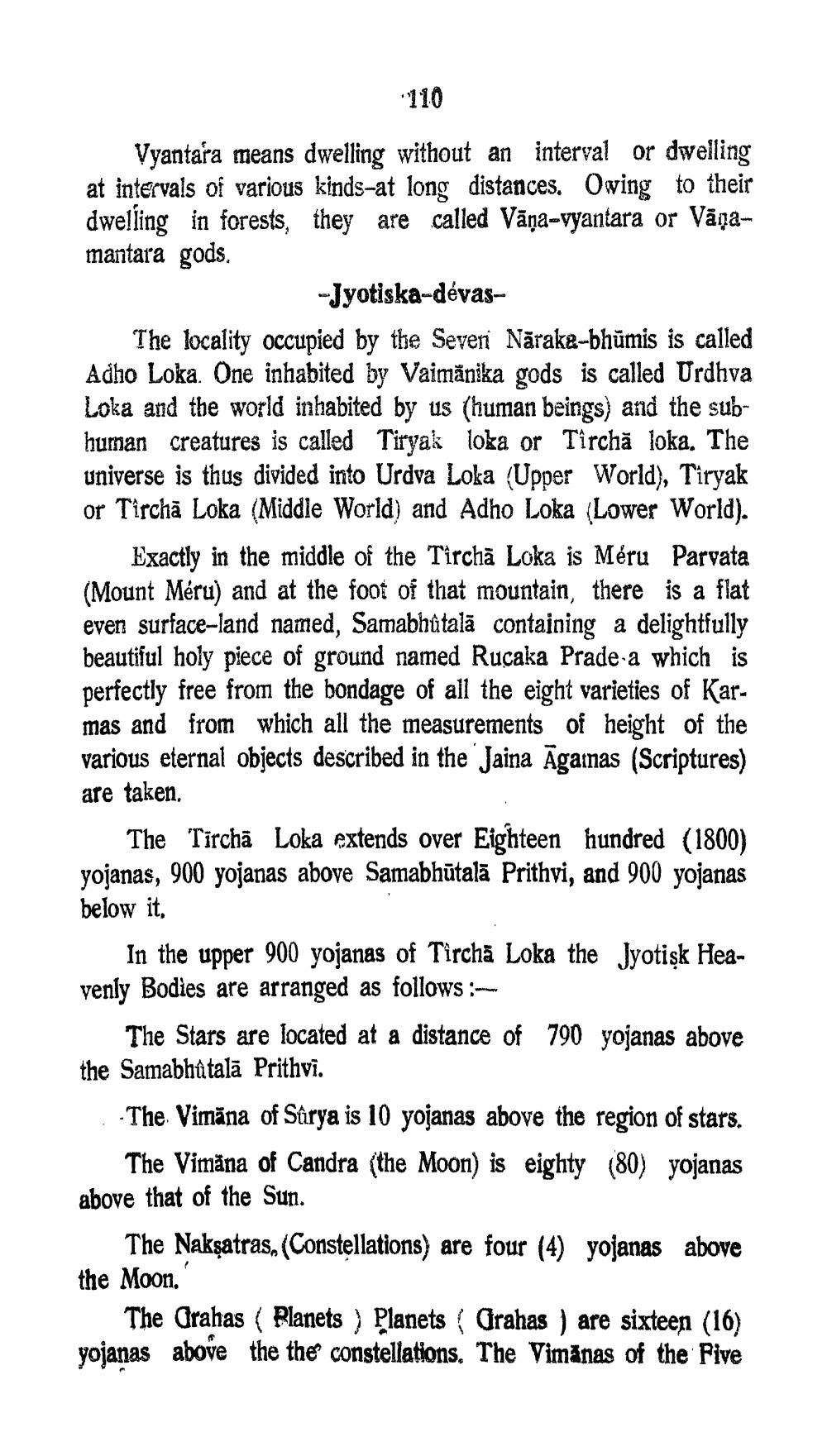________________
"110
Vyantara means dwelling without an interval or dwelling at intervals of various kinds-at long distances. Owing to their dwelling in forests, they are called Vāņa-vyantara or Vāņamantara gods.
-Jyotiska-dévasThe locality occupied by the Seven Näraka-bhūmis is called Adho Loka. One inhabited by Vaimănika gods is called Urdhva Loka and the world inhabited by us (human beings) and the subhuman creatures is called Tiryak loka or Tîrchă loka. The universe is thus divided into Urdva Loka (Upper World), Tiryak or Tircha Loka (Middle World) and Adho Loka (Lower World).
Exactly in the middle of the Tircha Loka is Méru Parvata (Mount Méru) and at the foot of that mountain, there is a flat even surface-land named, Samabhùtalā containing a delightfully beautiful holy piece of ground named Rucaka Prade a which is perfectly free from the bondage of all the eight varieties of Karmas and from which all the measurements of height of the various eternal objects described in the Jaina Āgarnas (Scriptures) are taken.
The Tircha Loka extends over Eighteen hundred (1800) yojanas, 900 yojanas above Samabhūtalā Prithvi, and 900 yojanas below it,
In the upper 900 yojanas of Tircha Loka the Jyotisk Heavenly Bodies are arranged as follows :
The Stars are located at a distance of 790 yojanas above the Samabhůtalā Prithvi.
The Vimāna of Sûrya is 10 yojanas above the region of stars.
The Vimäna of Candra (the Moon) is eighty (80) yojanas above that of the Sun.
The Nakşatras, (Constellations) are four (4) yojanas above the Moon
The Grahas ( Planets ) Planets ( Grahas) are sixteen (16) yojanas above the the constellations. The Vimānas of the Five




